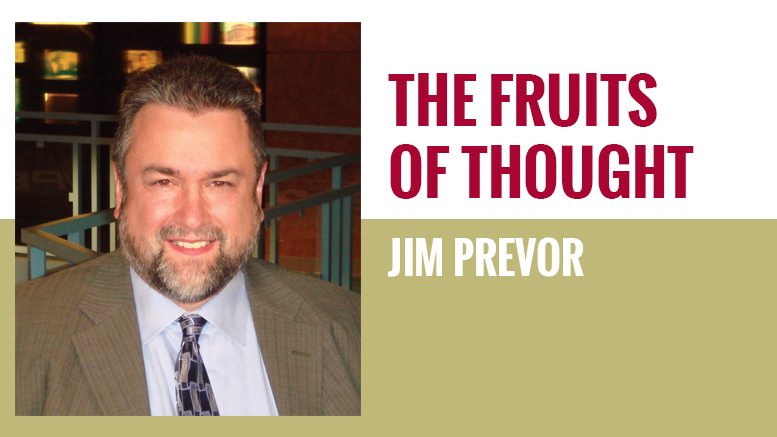Getting Hypocritical Consumers to Eat More Produce
November 19, 2024 | 4 min to read
Consumer behavior, much like the actions of Russia, can be complex and often contradictory. As highlighted, surveys reveal that while consumers claim to prioritize health, factors like convenience and taste drive their decisions, leading to increased fast food consumption, particularly among higher-income individuals. The article argues that the produce industry should focus on delivering delicious, convenient, and affordable products rather than solely promoting health benefits. Ultimately, aligning with consumers' interests will significantly boost produce sales.

By Jim Prevor, originally published in October 2018
Consumer behavior … it is as Winston Churchill said of the actions of Russia: “A riddle, wrapped in a mystery, inside an enigma.” Yet, Churchill said there might be a key to understanding, because he saw the behavior of the Russian government as one rooted in Russian national interest.
It may be that the key to understanding consumer behavior, in which so much of what is said differs from what is done, is best summarized in another famous phrase, “hypocrisy is a tribute vice pays to virtue,” which was penned by La Rochefoucauld, a 17th-century French author noted for his memoirs and maxims.
After all, the problem with asking consumers about produce consumption is that it is not a neutral question. Questions, such as what one eats and where one shops, are really detecting aspirations and class anxiety. Whether one shops at Walmart or Whole Foods is, again, not a neutral question.
Plus, in many cases, we are not actually doing survey work; we are getting impressions filtered through the media.
It doesn’t take a belief that the media is reporting the au currant “Fake News” to realize that certain stories are more interesting to report. Beautiful pictures of fresh items; interesting techniques that turn old standbys into new items, like noodles made from vegetables; products with stories such as locally grown or organic; and interesting entertainment, such as “vegetable butchers” sure beat reporting on people buying canned green beans.
Walmart is by far the largest food retailer in America. Aldi is the fastest-growing supermarket chain. Yet these facts seem as odd as a martian landing on earth to many Americans. And if we depend on the media for reports, one would certainly expect that Whole Foods/Amazon and Internet services account for almost all the food sold in America — though the reality is these concepts have minuscule shares of the market.
Yet it may be that Churchill’s assessment of the Russians — that they do things in their own interest — is true of consumers as well. And the problem is that consumers view their interests in a more complex way than researchers often do.
A recent study by the National Center for Health Statistics, Division of Health and Nutrition Examination Surveys reported on fast food consumption in America:
KEY FINDINGS
Data from the National Health and Nutrition Examination Survey
- During 2013-2016, 36.6% of adults consumed fast food on a given day.
- The percentage of adults who consumed fast food decreased with age: 44.9% aged 20–39, 37.7% aged 40–59, and 24.1% aged 60 and over.
- A higher percentage of non-Hispanic black adults consumed fast food than non-Hispanic white, non-Hispanic Asian and Hispanic adults.
- The percentage of adults who consumed fast food increased with increasing family income.
- Among those who consumed fast food, men were more likely than women to eat fast food at lunch, but women were more likely to report eating fast food as a snack.
All the stereotypes of fast food being for poor people are incorrect. As family income increases, consumers eat more fast food.
Don’t people want to be healthy? They say they do in surveys and claim they are trying to eat better. So where is the disconnect?
Consumers probably do want to be healthy, but that is not the only thing they want. And the urgency of other things, say feeding the kids before soccer practice or play rehearsal, drives behavior in other directions.
Industry efforts to use health as the great motivator for purchase have failed time and time again. Part of the problem is the effort is weak. Restaurants and supermarkets may want to be seen as on the side of the angels, so they may engage in some “pro-produce” efforts, but they really are agnostic on the matter. Their function is to sell the foods consumers want to eat, not to alter the dining habits of the whole country.
But even with very enthusiastic backers, efforts to boost consumption through health promotion suffer from the fact that almost everyone already identifies produce as healthy. They were taught as little children by their mothers. So, education has limited impact.
But, mostly, consumers think of many factors when purchasing food. Produce fails in many of these areas. For example, produce is not uniform in taste and flavor, prices can fluctuate dramatically, and many of the healthiest items require preparation, which means time and effort.
If the produce industry wants to get consumers to eat more produce, it shouldn’t have to rely on convincing consumers that it is good for them like some kind of medicine. The industry needs to produce consistently delicious items, often fresh-cut in a way that makes them convenient, and it has to do this at a price that is seen as advantageous to other options.
Concentrate on taste, quality, convenience and economy. Let the healthfulness be a bonus, and sales will soar.

Produce industry icon Jim Prevor, who founded Produce Business magazine in 1985, died Nov. 7, 2022. To honor his legacy as a maverick thought-leader, this space spotlights the best of Prevor’s “Fruits of Thought” column, which garnered more than 200 awards in business journalism.
13 of 23 article in Produce Business November 2024

